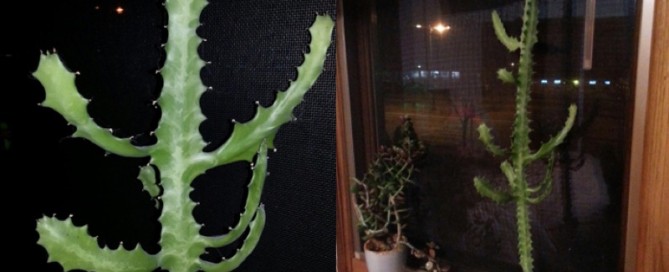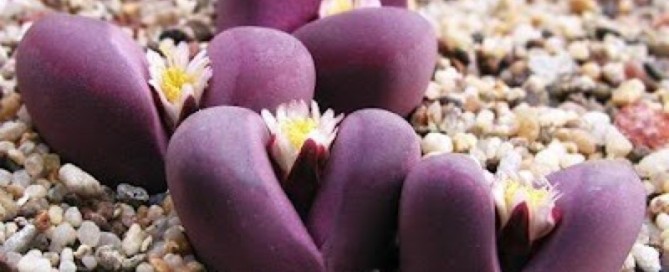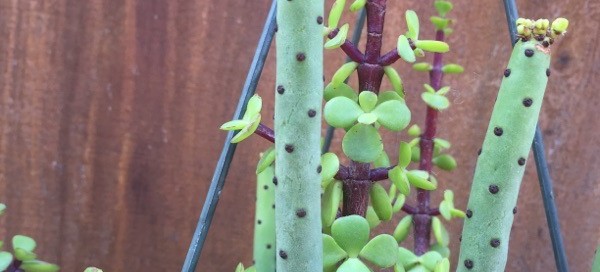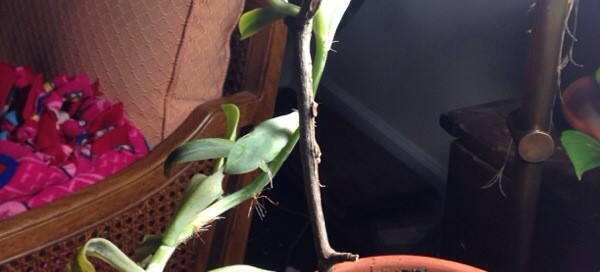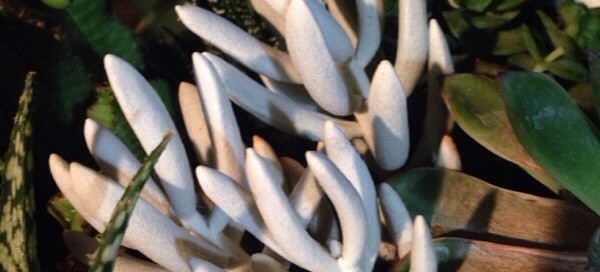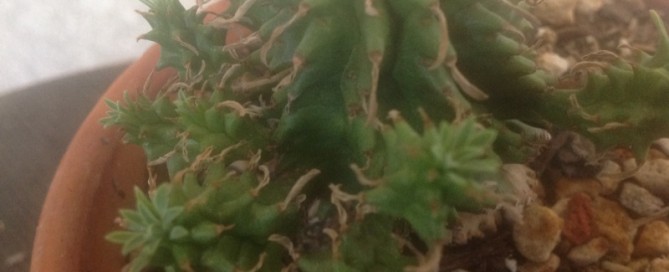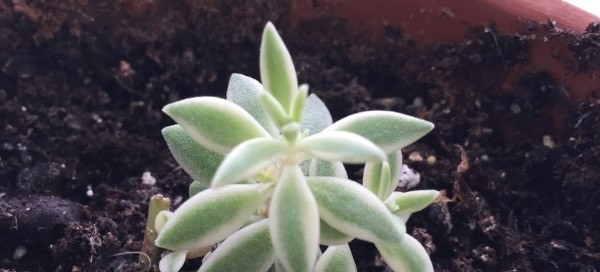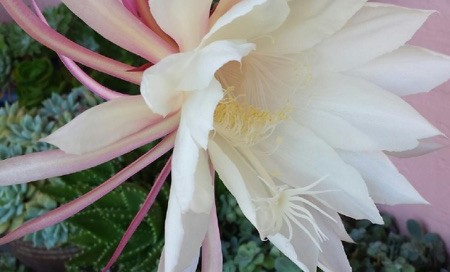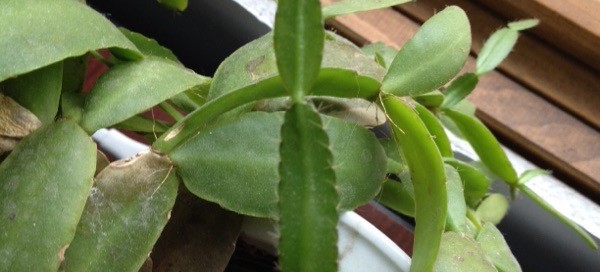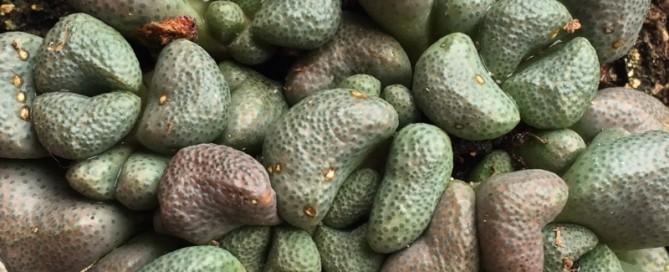Dragon Tree
Native to India and Ceylon, forms a candelabra-type specimen with deep green stems splashed zig-zaggedly down the centers with a lighter silvery green. In time, can become a small tree with a corky trunk topped by a canopy of hundreds of marbled green branches. Excellent as house plant in brightly lit areas, for atriums or on the patio. Can be used in the landscape in temperate regions. Responds well to warmth, with its active growth period in the late spring and summer months. Porous soil with adequate drainage. Water thoroughly when soil is dry to the touch during active growing season. Requires bright light for best appearance, and should be given a winter resting period at which time less water should be given. Protect from frost.
